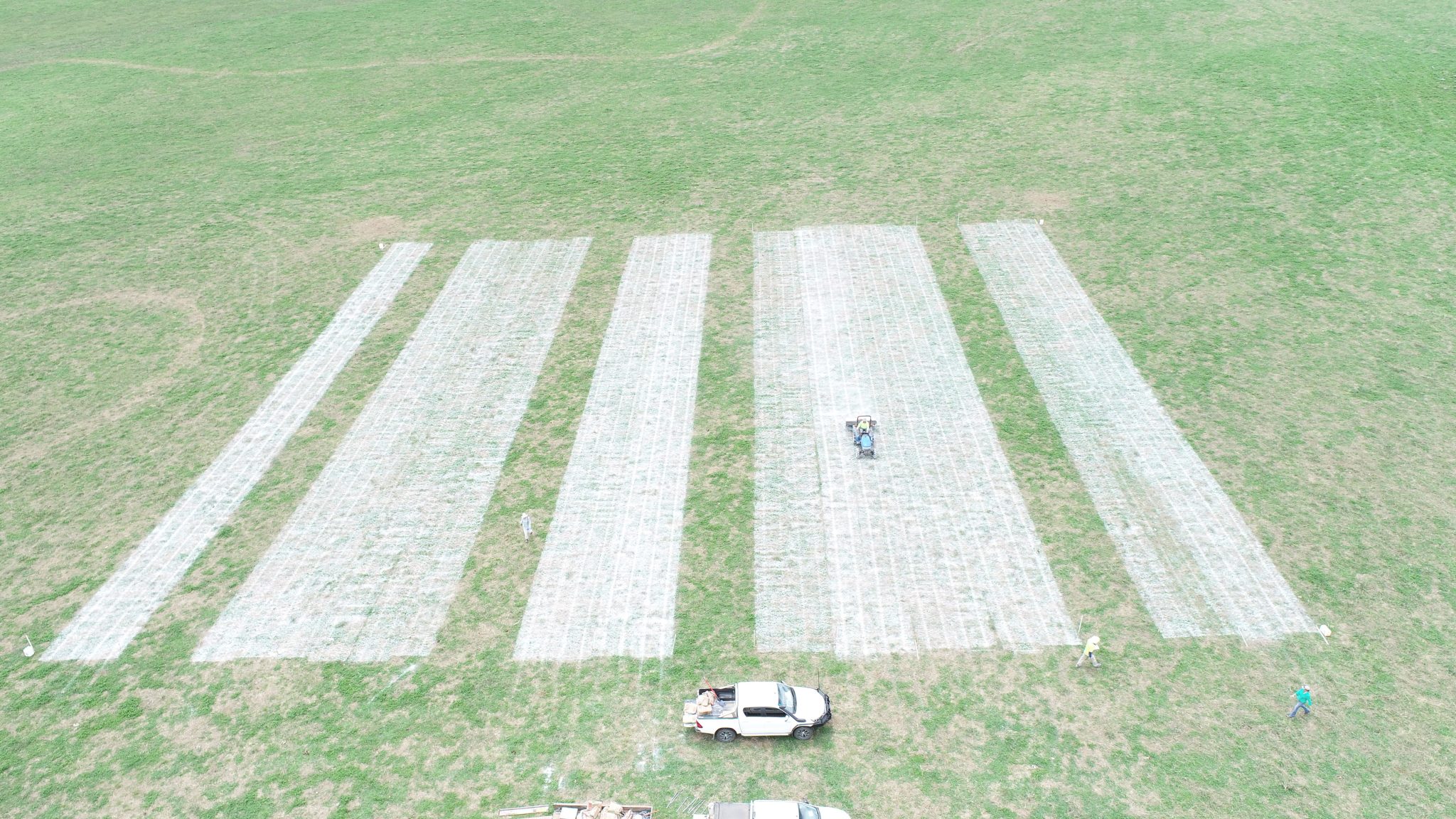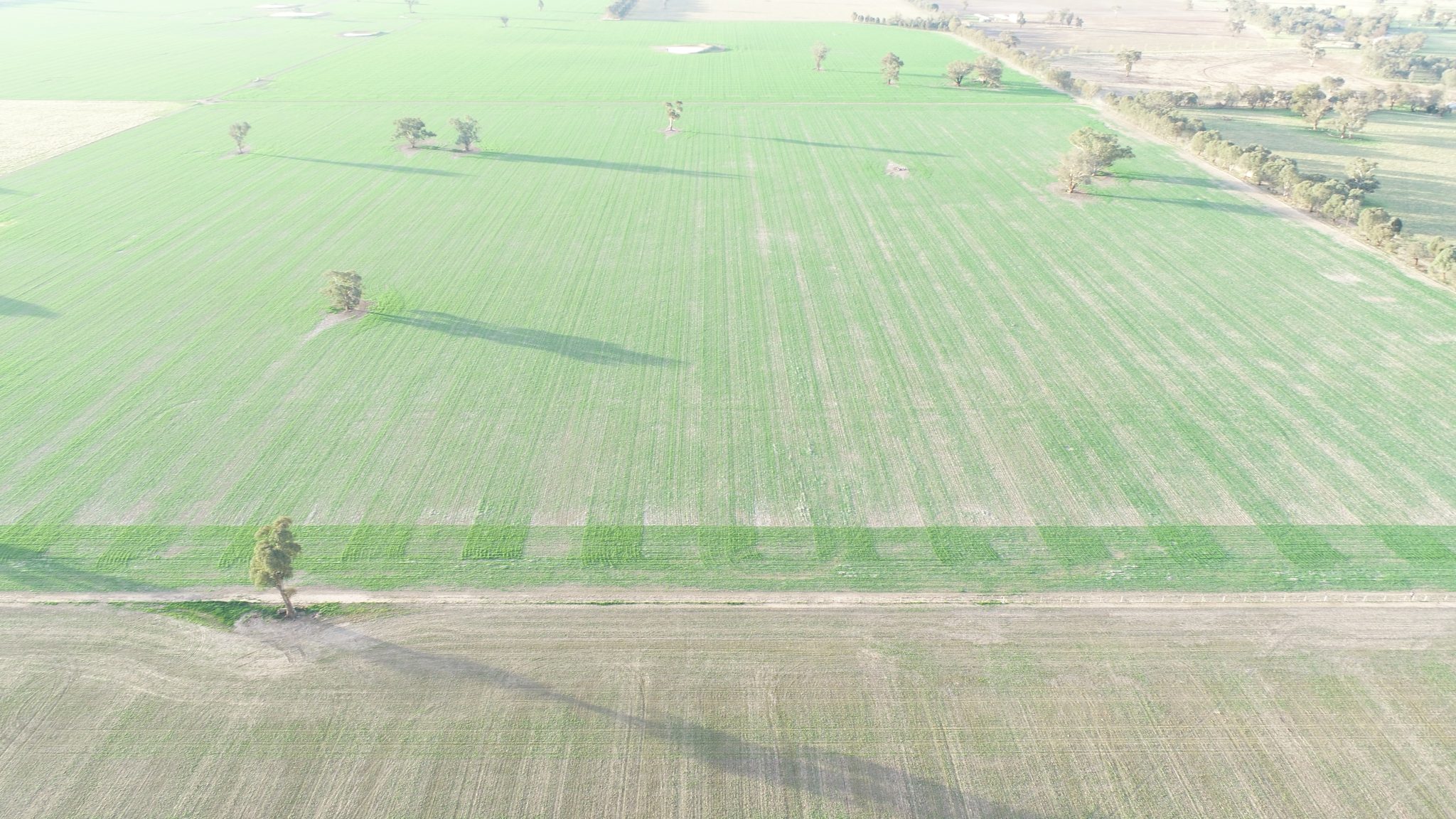Acid Soils Program
The landscape of the Holbrook region broadly consists of undulating hills of Ordovician metasedimentary rocks and Silurian granites in the east, and flat to gently undulating alluvial floodplains of the Billabong Creek and its tributaries in the west. Major soil types are Kurosols (strongly acid duplex soils), Chromosols (duplex soils), Kandosols (structureless soils) and Dermosols (structured soils) on the slopes; Sodosols (sodic duplex soils) in the drainage depressions and on the older alluvium of Billabong Creek; and Chromosols and Dermosols on the more recent alluvium. Swamps and minor areas of gilgai on the floodplain consists of Grey Vertosols (cracking clays). More information can be found in the Soil Landscapes of the Holbrook-Tallangatta 1:100 000 Sheet report and map.
The major soil constraint affecting productivity in pasture and cropping systems in our region is acidity, in particular subsurface acidity. Over the years, Holbrook Landcare has partnered with various research organisations and farming system groups on research projects looking at ways to address soil acidity in our region. For over 10 years we have also run a soil testing program for farmers and we actively use this data to monitor the trends in soil properties over time. See our ‘Soils Program’ below for more information on our current and past projects.
Read HLN’s Acid Soil Management Strategy here.
Why acid soils?
Soil acidity affects more than 50% of intensively used agricultural land in NSW and approximately 23% in Victoria, and is especially prevalent in the higher rainfall areas in our region. If we do not address acid soils now, further acidification will threaten future agricultural production.
Recent research on soils in the NSW Southern Slopes suggests that in most cases, current rates of lime application are not addressing the current soil acidification rate. An effective liming program should aim to increase soil pH (CaCl2) to a target of 5.5 in the top 10 cm, not 5.0 as has been the current practice. This will provide sufficient lime to raise pH in the surface soil and allow for excess lime to leach into deeper subsurface layers (5 – 20 cm) and slowly increase pH at depth.
Lime that is top-dressed moves very slowly into the subsurface layers, depending on soil type, rainfall and lime application rate. It is known that effective incorporation of the lime after spreading ‘speeds up’ the reaction of lime with the soil, to the depth of cultivation.
HLN in conjunction with NSW DPI have set up two new trial sites that will be looking at these questions – different liming rates, top-dressing lime vs incorporating and the effects on crop and pasture growth. Another issue being looked at is pH stratification – acidic layers in the soil that may be impacting crop and pasture growth but are not being detected by traditional soil tests that bulks samples into 10 cm intervals. A background on each of the projects is provided below.
‘FutureSOILS’ Project: 2020-2023
The ‘Future Soils’ project is funded by the Australian Government’s National Landcare Program to improve on-farm management of acid soils. The project is managed by FarmLink and is a collaboration between NSW DPI, the Australian National University, FarmLink, Holbrook Landcare Network, Central West Farming Systems, K-Line Ag and Westlime.
HLN is hosting one of the five trial sites for the 3-year project, a replicated farm-scale site at Burrumbuttock. The trial consists of 7 treatments investigating 4 different liming rates of 0.5 t/ha, 1 t/ha, 2.5 t/ha and the ‘one-in-a-generation’ 6 t/ha, as well as the effect of lime incorporation compared to surface applied. A total of 28 plots (7 treatments replicated 4 times), 70 m × 9 m in size, were marked out in early 2020 and NSW DPI used their direct drop spreader to apply the lime on the plots.
For more information, click here for the project flyer.

‘Managing Soil Acidity in Permanent Pastures’ Project: 2021 – 2028
The Meat & Livestock Australia (MLA) funded Producer Demonstration Site (PDS) project – ‘Managing soil acidity in permanent pastures’ is investigating top-dressed liming strategies in non-arable pasture systems where lime incorporation is not possible or preferred. The project involves three lime demonstration sites. One site at Mannus and another site at Holbrook were established by HLN and NSW DPI in February 2021 with funding from the ‘Tackling Soil Acidity’ project. The third site located at Rosewood, consists of multiple lime strips applied by the farmer since 2017. The MLA PDS funding, secured in March 2022, will enable these three sites to continue with money going towards annual soil testing, pasture measurements and field days.
The sites at Holbrook and Mannus are different to our lime sites at Burrumbuttock and Morven that are currently in a cropping phase and testing different lime rates, with and without incorporation. The Holbrook and Mannus sites include 4 treatments with 4 replications that were decided by the project steering committee made up of local producers, advisors, and the project research team (Table 1).
Read Year 1 results here
Read Rosewood Case Study here
Table 1. Mannus and Holbrook demonstration site treatments and descriptions

Table 2. Rosewood case study site lime strip descriptions


‘New Approaches to Tackling Soil Acidity in Perennial Pasture Systems’: 2019 – 2021
The ‘Tackling Soil Acidity’ project, is a 2-year project funded by the Australian Government’s National Landcare Program, with contributions from HLN, NSW DPI and the Grasslands Society of NSW Inc.
The main components of this project will:
- Introduce new soil sampling practices to detect and monitor subsurface acidity.
- Use large-scale acid soil management sites to test a combination of different lime rates, with and without incorporation, and investigate the impact of different soil pH targets on ameliorating subsurface acidity in the short term. In the long term we aim to attract future funding to monitor pasture response to the range of pH profiles created by the various treatments; and
- Survey perennial pasture paddocks to identify the current status of soil pH in layers from depths of 0-30 cm. Geolocated sites to be established as long-term monitor sites to track acidification over time.
Acid soil management site
HLN and NSW DPI are managing a trial site located in a paddock on ‘Boorook’, near Morven. This site was selected for this experiment as it has no previous liming history and has uniform soils across the paddock that are severely acidic ( pHCa < 4.5; Exch Al. > 20%) to depth.
The trial site was established, and lime spread in October 2019. The trial consists of 7 treatments investigating lime rates and the effect of lime incorporation (Inc) to a depth of about 10 cm with disc harrows, compared to surface applied (SA). The treatments were decided by the project steering committee made up of local producers, advisors, LLS representatives and the project research team. The amount of lime applied, was determined by the starting pH and ECEC and the target pH. The details for each treatment are below:
(i) Nil lime (Control)
(ii) Treatments 2 (SA) and 3 (Inc); 4t/ha lime targeting pHCa > 5.5 in the 0-10 cm depth;
(iii) Treatments 4 (SA) and 5 (Inc); 3t/ha lime targeting pHCa > 5.2 in the 0-10 cm depth (i.e. approximating current industry recommendations);
(iv) Treatments 6 (SA); 2 t/ha lime aimed at increasing pHCa of the surface 0-5 cm layer > 5.5; and
(v) Treatments 7(Inc); a ‘once-in-a-generation’ application of 6t/ha lime targeting a pHCa > 6.0
A canola hybrid was sown at the site in 2020, and wheat was sown in 2021.

